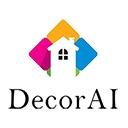DecorAI
Where creativity meets innovation
The problem DecorAI solves
Room Image Generation through Prompt This feature allows users to generate images of rooms based on prompts provided by the user. Users can specify the size of the room, the color scheme, and the style of the furniture. The Room Image Generation feature uses machine learning algorithms to generate realistic images of the room.
AR Marketplace The AR Marketplace feature allows users to view and purchase furniture items in augmented reality. Users can browse through a selection of furniture items and place them in their room using their mobile device's camera. This feature uses AR technology to provide a more immersive shopping experience.
3D Room Builder The 3D Room Builder feature allows users to build and design their own rooms in a 3D environment. Users can add walls, windows, and furniture items to their room and view it from different angles. The 3D Room Builder uses 3D modeling technology to provide a realistic representation of the room.
Room Panorama Effect The Room Panorama Effect feature allows users to view their room in a 360-degree panorama. Users can move their device around to view the room from different angles. This feature uses panoramic image stitching technology to create a seamless panorama of the room.
Challenges we ran into
Detecting walls in an image can be challenging due to a variety of factors. Here are some potential challenges that may arise:
Lighting conditions: The lighting in a room can affect the appearance of the walls, making it difficult to accurately detect them. Shadows, reflections, and varying levels of brightness can all impact the detection process.
Texture and patterns: The texture and patterns on walls can be very diverse and intricate, making it challenging to distinguish them from other objects in the image. This can be particularly problematic if the walls are covered with wallpaper, murals, or other decorations.
Obstacles in the image: Other objects in the image can obscure parts of the walls, making it difficult to accurately segment them. This can include furniture, people, and other decorations.
Image quality: The quality of the image itself can also affect wall detection. Low-resolution images or images with noise or distortion may be more difficult to process accurately.
To overcome these challenges, a variety of techniques can be used, such as image preprocessing, feature extraction, and machine learning algorithms. These techniques can help to improve the accuracy of wall detection and segmentation, allowing for more accurate analysis of the decor and other elements in the room.
